
The forecast assumes that the ongoing second or third waves of infections will stabilise in the second quarter and that steady progress on vaccinations will be made, allowing a gradual return to normality in major steel-using countries.
Despite the disastrous impact of the pandemic on lives and livelihoods, the global steel industry was fortunate enough to end 2020 with only a minor contraction in steel demand. This was due to a surprisingly robust recovery in China, with growth of 9.1 percent. In the rest of the world, steel demand contracted by 10 percent.
“In the coming years, steel demand will recover firmly, both in the developed and developing economies, supported by pentup demand and governments’ recovery programmes. However, for most developed economies, a return to the pre-pandemic levels of steel demand will take a few years,” Al Remeithi, Chairman of the world steel Economics Committee, said.
While it is hoped that the worst of the pandemic is passing, there is still considerable uncertainty for the rest of 2021. The evolution of the virus and progress of vaccinations, withdrawal of supportive fiscal and monetary policies, geopolitics and trade tensions could all affect the recovery envisaged in this forecast.
For the future, structural changes in a post-pandemic world will bring about shifts in steel demand shape. The steel industry will see exciting opportunities from rapid developments through digitisation and automation, infrastructure initiatives, reorganisation of urban centres, and energy transformation. All at the same time as the industry is responding to the need to produce low-carbon steel.”
China
Denne historien er fra May 2021-utgaven av Steel Insights.
Start din 7-dagers gratis prøveperiode på Magzter GOLD for å få tilgang til tusenvis av utvalgte premiumhistorier og 9000+ magasiner og aviser.
Allerede abonnent ? Logg på
Denne historien er fra May 2021-utgaven av Steel Insights.
Start din 7-dagers gratis prøveperiode på Magzter GOLD for å få tilgang til tusenvis av utvalgte premiumhistorier og 9000+ magasiner og aviser.
Allerede abonnent? Logg på

Steel's Net Zero mission
The country’s commitment to achieving Net Zero within a targeted timeframe will now propel its steel sector towards a sustainable future in line with global trends.
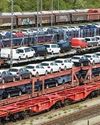
Fuel Price Hike, Supply Chain Disruption Hurt Festive Sales
Supply chain disruptions and fuel price hikes have hurt festive sales in a big way as most auto majors posted decline in sales in October.

Seaborne coking coal offers remain range-bound
Seaborne coking coal offers moved in a narrow range in October amid global supply tightness and healthy spot demand.
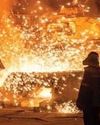
Global crude steel output down 8% in September
China manufactured 74 mt in September, fall of 21% y-o-y while India’s production went up by 7% to 10 mt.
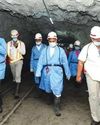
MOIL embarks on expansion projects
“Even though our country is blessed with manganese ore reserves, we import 50% of the domestic requirement. We have to lower our import dependence and save precious foreign exchange.” Ram Chandra Prasad Singh, Steel Minister

Iron ore handled by major ports down 17% in H1
The 12 major Indian ports handled 27 mt of iron-ore during H1 of 2021, down by 17% from 33 mt recorded for the corresponding period of previous year.
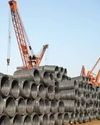
Shrinking China output to boost India exports
“In the third quarter of 2021, the company actively responded to the pressure from external policies, such as production curtailment and dual control system on energy consumption and intensity, as well as coal resource shortage and surging prices.” Baoshan Iron and Steel Co Ltd

Indian Railways' iron-ore handling up 25% in H1
Indian Railways in April-September of 2021 (H1) transported 84 mt of iron ore, up by 25% over 67 mt during April-September 2020.
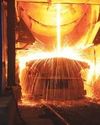
September crude steel production up 7.2% y-o-y
India’s crude steel production in September 2021 grew 7.2 percent to 9.547 million tons (mt) over September 2020 but was down by 3.2 percent from August 2021 output, provisional steel ministry data showed.

“Five enablers: way forward to sustainable cleaner steel”
Right and scalable technology, appropriate policy guidance by government, access to finance to fund transition, willingness of customers to pay for cleaner products and infrastructure for use of new technologies are the need of the hour for the sustainable and cleaner steel industry, according to Madhulika Sharma, Chief Corporate Sustainability, Tata Steel.